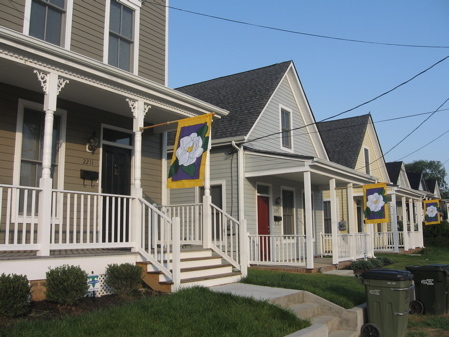In recent decades, unprecedented differences have developed in the price of new tract housing on the urban fringe in U.S. metropolitan markets. Nearly all of this difference is in costs other than site preparation and construction, which indicates rising land and regulation costs.
The first annual Demographia Residential Land & Regulation Cost Index estimates the differential in the lowest-priced new houses in each of 11 metropolitan regions compared to historic norms. Metropolitan regions in which land and regulation costs remain at or below historic norm have a Residential Land & Regulation Cost Index rating of 1.0, while those with land and regulation costs above the norm will have an Index above 1.0.
For at least 50 years, tract house construction costs on the urban fringe in the United States have represented 80 percent or more of the advertised house price. The balance, 20 percent or less, has been for land and regulation costs (leading to a “land and regulation cost ratio”). The Demographia Residential Land & Regulation Cost Index assumes this 20 percent land and regulation ratio.
Land Restrictions Hike Prices
In some metropolitan markets, house prices have increased far more rapidly than in the rest of the nation. Among the 11 markets reviewed in our study, cost increases above the historic 20 percent land and regulation cost ratio occurred in metropolitan markets that have implemented more restrictive land use regulations. These cost increases are independent of construction costs, which have risen similarly throughout the nation.
In six metropolitan markets the cost of tract housing on the urban fringe remained within historic norms. As a result, Atlanta, Dallas-Fort Worth, Houston, Indianapolis, Raleigh-Durham, and St. Louis each achieved a 1.0 Residential Land & Regulation Cost Index rating for the first half of 2010.
More restrictive land use regulation is variously referred to as “smart growth,” “growth management,” and other terms. In five metropolitan markets, the land and regulation cost ratio has risen above 20 percent. The Residential Land & Regulation Cost Index is estimated at 2.4 in Minneapolis-St. Paul, 3.9 in Seattle, 4.5 in Portland, 5.7 in Washington-Baltimore, and 13.2 in San Diego.
It is estimated that more restrictive land use regulation raises the price of the least expensive detached houses by nearly $30,000 in Minneapolis-St. Paul and more than $220,000 in San Diego than would be expected if these metropolitan markets had retained less restrictive land use regulations.
Economic research indicates a strong association between rising land costs and more restrictive land use regulations, especially where policies severely limit the quantity of land on which new construction is allowed—policies such as urban growth boundaries.
Affects Poor, Minorities
In response to the Demographia Residential Land & Regulation Cost Index, the Washington Examiner noted in an editorial titled “Take Your Pick: Smart Growth or Affordable Housing,” “No matter how much local politicians yammer about how much they support affordable housing, they are the principal cause of the problem via their land use restrictions, such as the urban growth boundary in Montgomery County and large-lot zoning in Loudoun County.”
Urban planner and mayor of Ventura, California, Bill Fulton objected to our attributing these increases to land and regulation, instead suggesting smart growth increases homes prices much less than our study showed. (He admits urban growth boundaries “do increase home prices at least a little.”) The pro-smart growth Costs of Sprawl—2000 concedes virtually all of the most favored smart growth strategies can increase house prices (in, for example, Table 15-4). Thus the debate is not about whether more restrictive land use policies raise the price of housing, but rather by how much.
Proponents of more restrictive land use regulations have avoided and even denied the inconvenient truth linking their policies with higher housing costs. They have virtually never told elected or appointed officials about the affordability-destroying impacts of proposals to limit or ban development on the urban fringe. They have not told representatives of the NAACP or La Raza about how “smart growth” raises housing prices and places home ownership out of reach for more African-American or Hispanic households.
Support Likely to Decline
American households face daunting financial challenges. Even those lucky enough not to have suffered huge savings and retirement fund losses in the recession seem likely to pay more of their incomes in taxes in the years to come, as governments attempt to pay bills well beyond their ability. In addition, the nation’s declining international competitiveness and the easy money policies of the Federal Reserve could well set off inflation which would discount households’ incomes further.
In this environment the last thing governments should do is to raise the cost of anything. And while middle-income households may have less discretionary income, lower-income households will face an even more severe fate. This reality is likely to create difficulties for proponents of more restrictive land use regulation, because there is no constituency for increasing poverty.
With the financial uncertainty American households face, it is long past time that the choice between smart growth and housing affordability be seriously debated.
Wendell Cox ([email protected]) is principal of Demographia, an international public policy firm, and a visiting professor at the Conservatoire National des Arts et Metiers in Paris, a national university.
Internet Info
“Demographia Residential Land and Regulation Cost Index: 2010”: http://www.demographia.com/dri-full.pdf





